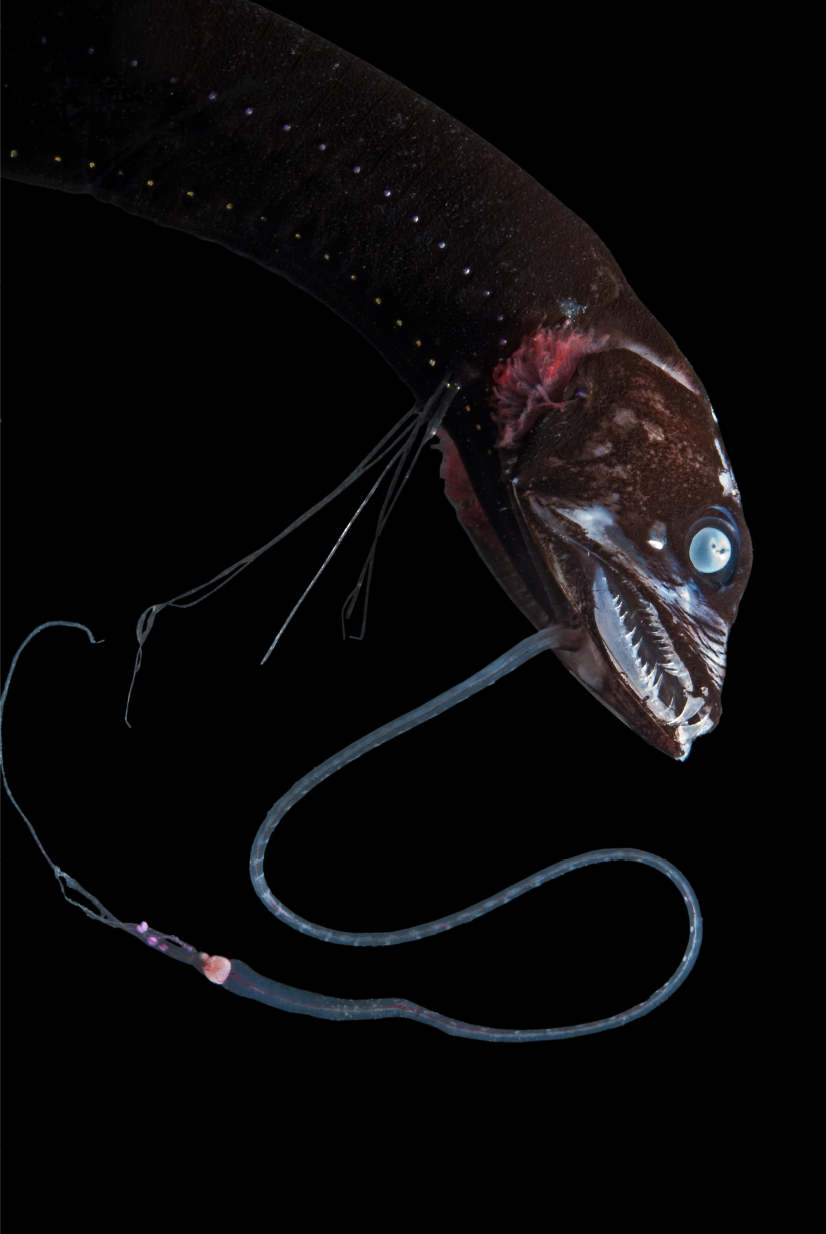Bioluminescence and ultra-black camouflage in deep-sea fish - Livestream

At depths >200m there is little ambient sunlight, but bioluminescent organisms provide another light source that can reveal animals. Pigmentation, however, allows an animal to absorb emitted light. We present evidence that suggests selective pressure to reduce reflected bioluminescence has led to the evolution of ultrablack skin (reflectance <0.5%) in at least 16 species of deep-sea fishes across seven distantly related orders. Histological data suggest this low reflectance is mediated by a layer of densely packed melanosomes in the dermis. Using finite-difference time-domain modeling, we find that the melanosomes in these ultrablack species are optimized in size and shape to minimize reflectance. The low reflectance results from melanosomes scattering light within the melanosome layer, thus increasing the optical path length and therefore light absorption by the melanin. By reducing reflectance, ultrablack fish can reduce the sighting distances of visual predators more than six-fold compared to black fish with 2% reflectance.
Speaker: Sonke Johnson, Duke University
Register at weblink to receive connection information
Wednesday, 10/08/25
Contact:
Website: Click to VisitCost:
FreeSave this Event:
iCalendarGoogle Calendar
Yahoo! Calendar
Windows Live Calendar
